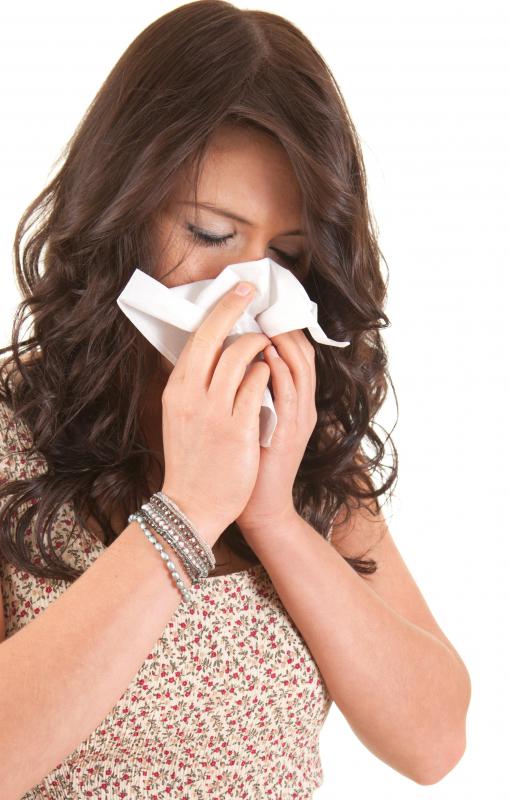At WiseGEEK, we're committed to delivering accurate, trustworthy information. Our expert-authored content is rigorously fact-checked and sourced from credible authorities. Discover how we uphold the highest standards in providing you with reliable knowledge.
What is Antiviral Tissue?
Facial tissue companies are always looking for ways to improve their products, and coming up with antiviral tissue is no exception. From the beginning, companies have worked to increase the uses and the formulas in order to become major players in the personal care industry. In fact, the name “facial tissues” came about due to their original use, when they were sold as disposable cloths for removing cosmetics, lotions, and other facial treatments. They were later sold as disposable handkerchiefs, causing sales to skyrocket.
Today, you can find a variety of tissues in new and improved versions. Tissues have been made stronger and more absorbent to better catch sneezes and coughs. They have been made softer to be more soothing to the skin. There are tissues with lotion added to help prevent chafing the skin when repeated wiping or blowing of the nose is necessary.

The idea to make a product that could help reduce the spread of cold and flu is no different. It’s called antiviral tissue, and it has a three-ply design. One of the most popular facial tissue companies states that its antiviral tissue is proven to kill 99.9% of cold and flu viruses. The layer in the center is activated when moisture is absorbed, and it then proceeds to destroy viruses.

It can take up to fifteen minutes to kill viruses if present, and there are also other questions about the product’s effectiveness in reducing the spread of cold and flu. An infectious disease specialist at Johns Hopkins questions the efficacy, summarizing that antiviral tissue may not have as great an impact as expected. The most important aspect to reducing the spread of cold and flu is effectively capturing coughs and sneezes.
No tissue can guarantee that every droplet will be contained, thus viruses will still come into contact with people and common items. While antiviral tissue may help to some extent, hand washing and disinfecting surfaces are still important steps in reducing the spread of cold and flu. While these considerations make sense, it is also clear that there are some areas in which antiviral tissue could be more effective than regular tissue.
An antiviral tissue that is dropped or left behind after use is much less likely to spread sickness. Many times, parents and other family members become sick when caring for an infected individual. Mom cleans up used tissues, and catches her child’s cold. Antiviral tissue could help prevent this way of spreading illness.
There is no foolproof way to avoid colds or flu, but if antiviral tissue can help to even a small degree, many people think it’s worth purchasing. It is a popular idea and marketing studies have shown that people are interested in the product. Even before it hit store shelves, people surveyed said that they would use and even recommend antiviral tissue.
AS FEATURED ON:
AS FEATURED ON:












Discuss this Article
Post your comments